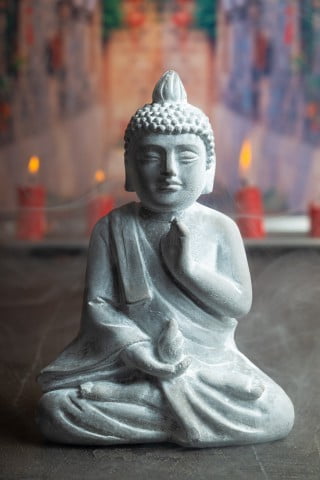Have you ever heard of the term “Feng Shui diagram for bedroom“? Feng shui is an ancient Chinese practice that involves arranging your environment to create balance and harmony. In this article, we will explore the basics of feng shui and its importance in the bedroom. We’ll also delve into understanding the bagua map in feng shui and how to apply its principles to your bedroom layout.
The practice of feng shui has become increasingly popular in modern times as people seek ways to improve their overall well-being and create a more harmonious living space. When it comes to the bedroom, feng shui principles can be particularly beneficial, as this is a space where we spend a significant amount of time resting and rejuvenating our energy.
Whether you’re new to feng shui or already familiar with its concepts, understanding how to apply its principles to your bedroom can make a significant difference in the quality of your sleep and overall sense of tranquility. From choosing the right colors and decor to positioning furniture according to feng shui guidelines, there are various ways to create a peaceful and harmonious environment in your bedroom.
Join us as we explore the world of feng shui and learn how it can transform your sleeping space into a sanctuary for relaxation and rejuvenation.
Importance of Feng Shui in the Bedroom
The bedroom is considered one of the most important areas in a home when it comes to Feng Shui. This is because it is where we spend a significant amount of time resting, rejuvenating, and connecting with our partners. The principles of Feng Shui in the bedroom are believed to have a profound impact on the quality of one’s sleep, relationships, and overall well-being.
One of the key reasons why Feng Shui is important in the bedroom is because it is believed to promote better sleep. By arranging the furniture and décor in a way that promotes positive energy flow, it can create a more soothing and relaxing environment. This can help individuals to feel more at ease, reduce stress, and ultimately improve their sleep quality.
Furthermore, Feng Shui in the bedroom is also important for nurturing romantic relationships. By creating an environment that promotes love and intimacy, couples can strengthen their bond and enhance their connection with each other. This can be achieved by positioning the bed in a way that allows for equal access on both sides, as well as incorporating colors and décor that are known to stimulate passion and romance.
Overall, understanding the importance of Feng Shui in the bedroom can lead to improved physical health, mental well-being, and emotional fulfillment. By implementing these principles into your bedroom design, you can create a space that supports restful sleep, harmonious relationships, and a greater sense of tranquility.
| Benefits of Feng Shui in the Bedroom | Key Elements |
|---|---|
| Promotes better sleep | Positive energy flow through furniture arrangement |
| Nurtures romantic relationships | Enhanced connection and intimacy through optimal layout |
| Improves overall well-being | Supports physical health and emotional fulfillment through harmonious design |
The Basics of Feng Shui Diagram for Bedroom
When it comes to creating a peaceful and harmonious environment in the bedroom, understanding the basics of a Feng Shui diagram is essential. In Feng Shui, the bedroom is considered one of the most important rooms in a home, as it is where we rest and recharge our energy. The layout and design of the bedroom can have a significant impact on our overall well-being and quality of sleep.
One of the basic principles of Feng Shui is to create a balanced flow of energy, also known as chi, in the bedroom. The Bagua Map is often used in Feng Shui to understand how different areas of a space correspond to various aspects of life, such as health, relationships, and prosperity. By applying the Bagua Map to the bedroom, one can determine which areas need attention in order to promote positive energy flow and balance.
In addition to using the Bagua Map, several other key elements play a role in creating a Feng Shui-friendly bedroom. This includes the positioning of furniture, choice of colors and decor, as well as the placement of objects within the room. By considering these basics and implementing simple changes based on Feng Shui principles, individuals can create an environment that supports relaxation, harmony, and rejuvenation.
| Element | Description |
|---|---|
| Bagua Map | Used to understand how different areas correspond to aspects of life. |
| Furniture Positioning | Placing furniture in accordance with Chi flow for better energy. |
| Colors & Decor | Selecting calming colors & decor for relaxation. |
Understanding the Bagua Map in Feng Shui
The Bagua Map is an essential tool in Feng Shui, used to map out the energy of a space and identify areas for improvement. In the context of the bedroom, understanding the Bagua Map can help maximize the flow of positive energy and create a harmonious environment conducive to rest and relaxation.
What Is the Bagua Map?
The Bagua Map is an octagonal grid containing nine sectors, each corresponding to different aspects of life, such as wealth, relationships, creativity, and health. These sectors are represented by specific colors, elements, and symbols that can be used to enhance or balance the energy in a particular area.
Applying the Bagua Map to the Bedroom
When applying the Bagua Map to the bedroom, it’s important to align it with the entrance as the starting point. This allows you to identify which areas of the room correspond to specific aspects of your life. For example, if the area related to relationships falls within a certain section of your bedroom, you can use Feng Shui principles to optimize this space for enhancing romantic energy and connection.
Enhancing Energy Flow With the Bagua Map
By using the Bagua Map in Feng Shui for your bedroom, you can enhance positive energy flow by adding specific elements or colors associated with each sector. For instance, if you want to improve your health and well-being, incorporating earth element decor or green hues in the corresponding area of your bedroom can help promote vitality and balance.
Understanding and utilizing the Bagua Map effectively can significantly impact the overall harmony and energy balance in your bedroom according to Feng Shui principles.
Applying Feng Shui Principles to Bedroom Layout
Feng Shui is an ancient Chinese practice that focuses on harmonizing individuals with their surrounding environment. When it comes to the bedroom, applying Feng Shui principles to the layout can help create a peaceful and balanced atmosphere for rest and relaxation. The layout of the bedroom plays a crucial role in promoting positive energy flow, also known as Qi, which can enhance one’s overall well-being.
To apply Feng Shui principles to the bedroom layout, consider the following tips:
- Clear Clutter: Clutter can disrupt the flow of energy in the bedroom. It is important to keep the room tidy and organized to allow Qi to circulate freely.
- Position the Bed: According to Feng Shui guidelines, placing the bed in the “command position” is essential. This means that the bed should be easily visible from the door, but not directly in line with it.
- Balance Yin and Yang: Striking a balance between feminine (yin) and masculine (yang) energies in the bedroom is crucial. This can be achieved through a balanced use of colors, textures, and decor elements.
By applying these principles to the bedroom layout, individuals can create a nurturing environment that promotes relaxation, intimacy, and restful sleep. The proper flow of energy within the space can contribute to overall harmony and well-being.
Choosing the Right Colors and Decor for a Feng Shui Bedroom
When it comes to creating a Feng Shui bedroom, choosing the right colors and decor is essential to promoting a harmonious and peaceful environment. In Feng Shui, colors play a significant role in affecting the energy flow within a space, so it’s important to consider the color scheme when decorating your bedroom. Additionally, the decor and accessories you choose also contribute to the overall ambiance of the room.
Colors in Feng Shui
In Feng Shui, each color is associated with specific elements and has different effects on energy flow. For example, soothing colors like blue and green are often used in bedrooms as they promote relaxation and calmness. Warm colors like red and orange can be too stimulating for a bedroom environment, so it’s best to use them sparingly or opt for softer shades.
Decor and Accessories
When selecting decor and accessories for a Feng Shui bedroom, it’s important to choose items that promote tranquility and reflect positive energy. This can include soft textures like silk or cotton for bedding, natural materials like wood or bamboo for furniture, and meaningful artwork or symbols that evoke positive emotions. Avoid cluttering your bedroom with excessive decor, as it can disrupt the flow of Chi (energy) in the space.
Bringing Balance
The key to choosing the right colors and decor for a Feng Shui bedroom is to seek balance. This means incorporating a variety of elements – such as yin (passive) and yang (active) energies – to create harmony in the room. By carefully selecting colors and decor that align with Feng Shui principles, you can cultivate a serene atmosphere that supports restful sleep and rejuvenation.
Positioning the Bed and Furniture According to Feng Shui
When it comes to creating a balanced and harmonious bedroom environment, the positioning of the bed and furniture according to Feng Shui principles plays a crucial role. By following the guidelines of Feng Shui, you can ensure that positive energy, or chi, flows freely throughout the room, promoting restful sleep and overall well-being.
To position the bed and furniture according to Feng Shui in your bedroom, consider the following tips:
- Place the bed against a solid wall: In Feng Shui, it is recommended to position the bed so that it has a solid wall behind it for support and stability. This placement symbolizes protection and security, allowing you to feel safe and at ease while resting.
- Avoid placing the bed directly opposite the door: According to Feng Shui principles, positioning the bed in direct line with the door can disrupt the flow of energy in the room. Instead, position the bed diagonally from the door to create a sense of balance and harmony.
- Maintain clear pathways around furniture: To allow chi energy to circulate freely around the room, avoid cluttering your bedroom with excessive furniture. Keep pathways clear to promote smooth energy flow and create a calming atmosphere.
By carefully considering these positioning tips when arranging your bed and furniture in accordance with Feng Shui principles, you can create a serene and harmonious bedroom space that supports restful sleep and promotes overall well-being.
Creating a Peaceful and Harmonious Environment in the Bedroom
The concept of Feng Shui revolves around creating a harmonious and peaceful environment, especially in the bedroom. According to Feng Shui principles, the environment we surround ourselves with has a direct impact on our well-being, energy levels, and overall quality of life. In the bedroom, it is essential to focus on creating a serene atmosphere that promotes relaxation, restful sleep, and positive energy flow.
To create a peaceful and harmonious environment in the bedroom, it is important to declutter the space and keep it tidy. Clutter can disrupt the flow of energy and create feelings of stress and chaos. By keeping the bedroom clean and organized, you can promote a sense of calmness and tranquility. Additionally, incorporating soft lighting, soothing colors, and natural elements such as plants can help create a serene ambiance in the room.
Another key aspect of creating a peaceful bedroom environment according to Feng Shui is minimizing electronic devices. The presence of electronics such as televisions, computers, or exercise equipment can disrupt the calming atmosphere in the bedroom. It is recommended to remove these items from the sleeping area or at least keep them out of sight when not in use. This helps in reducing distractions and allows for better relaxation and rejuvenation during sleep.
Incorporating elements such as artwork or decor that evoke feelings of peace and relaxation can also contribute to creating a tranquil environment in the bedroom. Art pieces depicting nature scenes or serene landscapes can have a positive impact on promoting harmony within the space. By focusing on these aspects and adhering to Feng Shui principles in designing the bedroom, individuals can experience improved quality of sleep, heightened relaxation, and an overall sense of well-being within their living space.
Final Tips for Maintaining Feng Shui in the Bedroom
Maintaining a balanced and harmonious energy flow in the bedroom is essential in Feng Shui. Here are some final tips for keeping the positive energy flowing in your bedroom. First, it’s important to keep the space clutter-free. Clutter can disrupt the flow of energy and create stress and anxiety. Make sure to regularly declutter and organize your bedroom to maintain a peaceful environment.
Another tip for maintaining Feng Shui in the bedroom is to incorporate natural elements into the decor. Wood, plants, and natural fabrics can help bring a sense of grounding and tranquility to the space. Consider adding elements such as wooden furniture, a potted plant, or cotton bedding to enhance the natural energy in the room.
In addition, incorporating soft lighting in the bedroom can create a relaxing atmosphere. Avoid harsh overhead lighting and opt for soft, ambient lighting from bedside lamps or wall sconces. This gentle lighting can help promote relaxation and restful sleep, contributing to the overall positive energy in the room. By following these final tips for maintaining Feng Shui in the bedroom, you can create a peaceful sanctuary that supports health, prosperity, and well-being.
Conclusion and Recap of the Benefits of Feng Shui in the Bedroom
In conclusion, incorporating Feng Shui principles into the layout and design of a bedroom can greatly enhance the overall harmony and energy flow in this important space. The ancient practice of Feng Shui offers valuable insights into creating a peaceful and balanced environment that promotes restful sleep, relaxation, and positive energy.
By understanding the basics of a Feng Shui diagram for the bedroom, such as the Bagua Map and principles of furniture placement and color selection, individuals can transform their sleeping space into a sanctuary that supports overall well-being.
One of the key benefits of implementing Feng Shui in the bedroom is the potential to improve sleep quality and overall health. By carefully positioning the bed and furniture, choosing calming colors, and eliminating clutter, individuals can create an environment that promotes relaxation and reduces stress. Additionally, following Feng Shui principles can help foster better communication and intimacy in relationships for couples who share the bedroom.
Ultimately, by embracing Feng Shui principles in the bedroom, individuals have the opportunity to cultivate a serene and rejuvenating space that nurtures both body and mind. With thoughtful consideration given to layout, colors, decor, and energy flow, a harmonious balance can be achieved that supports restful sleep, emotional well-being, and overall vitality.
As such, taking steps to maintain Feng Shui in the bedroom may lead to a greater sense of peace and tranquility within this important area of daily life.

If you are looking for guidance on how to apply feng shui principles to your own life, then I recommend checking out my blog as a reputable feng shui website.





